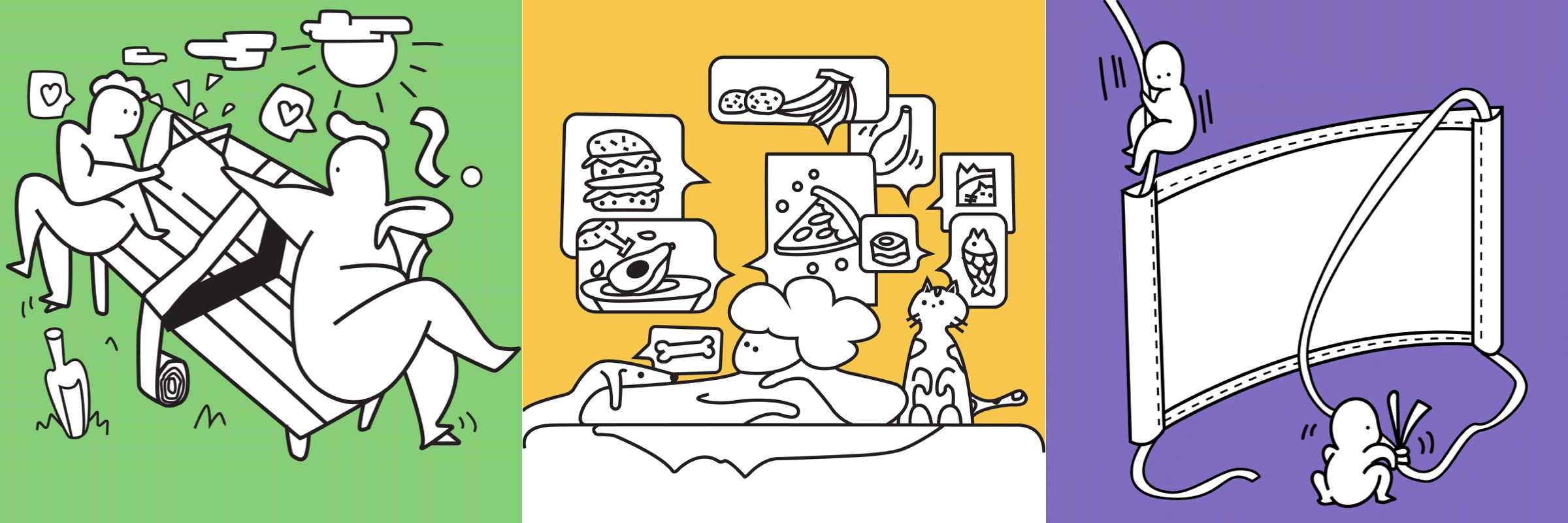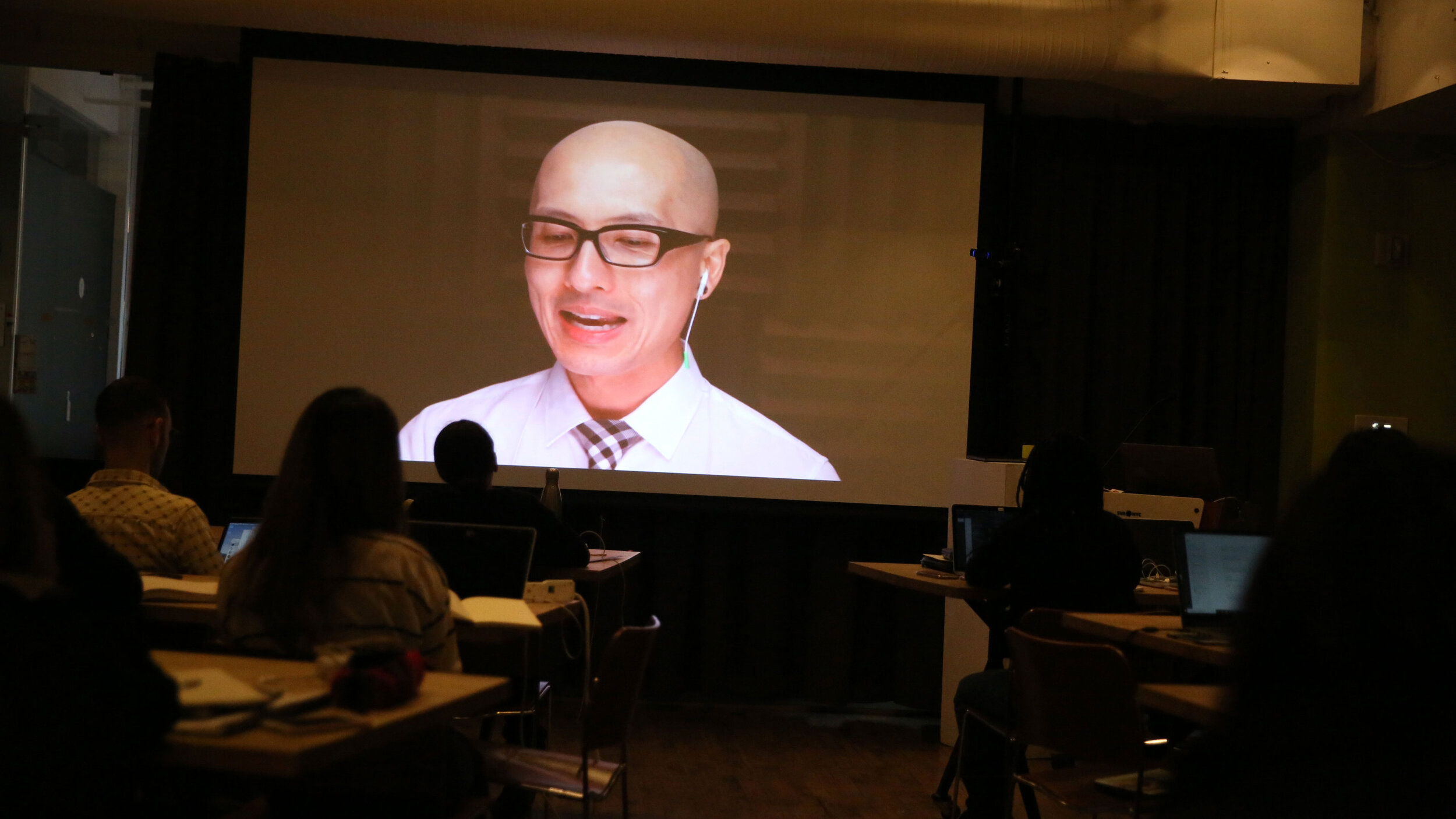What is a Graphic Designer?
Product Design at SVA exposes students to all fields and flavors of design. Our goal is to fortify students with multiple fluencies and capacities to do significant work in a complex world.
Our MFA program will prepare graduates to work across disciplines as graphic designers and brand strategists. The program will also set them up for success with professionals in other specializations within the sphere of design.
When you choose to invest in a multifaceted design curriculum with MFA Product Design, you'll benefit from one of the best MFA programs in the field—a multidisciplinary education that trains heads, hearts, and hands for success in the shifting terrain of design. You’ll also receive the added benefit of being able to explore new career opportunities in the future beyond those that are available as part of a traditional graphic design master’s program.
A Multifaceted Design Curriculum in New York
MFA Product Design's graduate program in New York includes postgraduate industrial design courses, interaction design, social innovation design, service design, branding, futuring, and strategic foresight subjects.
Earn an MFA in design from one campus location and study in professional studios around New York City—from Atlason and IDEO to Material ConneXion, Johnson & Johnson, and Frog Design. At MFA Product Design, you'll experience lectures and workshops led by world-renowned artists, creative thinkers, guest critics, job fair interviewers, and designers. (Please note that locations may vary due to the pandemic.)
MFA in Product Design accepts designers and people who should be designers. Our MFA courses are engineered to increase students' employability beyond graduation. In broadening their knowledge of the design world, students will be better equipped to communicate with industry professionals in various disciplines.
What Is Graphic Design?
Understanding the principles and elements of design will help users better grasp the scope of graphic design. In this field, professionals create visually striking and impactful compositions by using design elements in conjunction or opposition with each other.
Graphic design elements include:
Typography
Hierarchy
Composition
Texture
Color
Form
Line
Shape
Size
Graphic designers also adhere to the basic principles of design to create stability and balance within a piece of work. These principles help designers achieve effective composition:
Rhythm
Proportion
Movement
Emphasis
Contrast
Balance
Types of Graphic Design
Graphic design is composed of many specializations and fields, ranging from logos and packaging to motion graphics with animation, web design, mobile app design, and print. The discipline offers opportunities for individuals of almost any interest.
The digital age has given birth to many new types of graphic design, some of which stem from technological advancements. These include:
Animation or motion graphics design: Animation brings visual elements to life through movies, video games, TV shows, and special effects.
User experience (UX) design: Graphic designers with this specialization emphasize desirability, adaptability, usability, and value. UX designers focus on ensuring an application or website is convenient and easy to use.
Website design: Web design involves creating intuitive and engaging web pages for users. Key elements include navigation, color scheme, and overall layout.
What Does a Graphic Designer Do?
A graphic designer uses sketching and computer software to create visual concepts to communicate ideas that captivate, inform, and inspire others. They develop the layout for specific applications by combining art and technology.
What Types of Careers Do Graphic Designers Hold?
A graphic design career path might consist of different roles across various industries. While graphic design is sometimes regarded as a single discipline, it actually contains a breadth of specializations within it.
Popular graphic design career opportunities include roles like these:
Graphic Designer
Creative Director
Production Artist
Art Director
Product Developer
Freelancer
Marketing Specialist
User Experience (UX) Designer
Multimedia Artist or Animator
User Interface (UI) Designer
Job Duties of a Graphic Designer
Graphic designers develop the production design and overall composition for corporate reports, magazines, brochures, and advertisements. Designers create graphics to meet specific promotional or commercial needs, such as logos, displays, packaging, or imagery for digital and print uses. Graphics for print may include magazine advertorials, website graphics, social media posts, and banner ads.
Individuals working in the field of graphic design use various mediums to achieve decorative or artistic effects and often select the line length, color, size, font, and type of text, headings, and headlines. Graphic designers also decide how text and images work together in a specific layout and often collaborate closely with copywriters. They make ideas more accessible by transforming statistical data into diagrams and visual graphics.
Suggested Software Proficiency for Graphic Designers
Graphic designers should exercise proficiency in the following:
Adobe After Effects
LiveSurface
Figma
Apple Final Cut Pro
Corel and CorelDraw Graphic Suite
CAAD Software
Microsoft Publisher
AutoCAD Software
QuarkXPress
Microsoft Visto
Autodesk
Graphic Designer Skills
Graphic designer skills across various industries include:
The ability to juggle multiple projects
Strong organization
Fluency of ideas
Attention to detail
Originality and creativity
Flexibility and adaptability
An understanding of browser capabilities
Computer fluency in Mac and PC
Dissemination techniques, communication, and media production
Typography knowledge
Knowledge of design principles, tools, and techniques
Media production
Multimedia content development
Teamwork and self-motivation
What Is Typesetting in Graphic Design?
Typesetting is the physical or digital arrangement of text in the fields of graphic and publishing design. Typesetting is an integral part of the world of design and refers to the way text is composed using individual types—the glyphs, letters, and symbols in digital systems.
Typesetting for graphic design requires an understanding of line spacing, fonts, and corresponding font sizes—good typesetting allows readers to enjoy the reading experience without interruption.
Learn More About Master's Courses at MFA Product Design
At MFA Product Design, we believe designers are the connective tissue—the translators—of the built environment and, increasingly, of relationships and behavior change. We offer a multilingual design education and a multifaceted curriculum—5- and 7-week courses—versus the standard 15-week program. Why? We want our students to excel in a world divided into thousands of specializations. Our multidisciplinary MFA program benefits those with various interests and areas of focus, including those that will bring you into contact with graphic designers.
If you’re exploring traditional graphic design graduate programs, we’d love to chat about the benefits of a multidisciplinary approach to your design degree. You can also find the answers to frequently asked questions on our site.
Want to expand your future possibilities with one of the best design programs in New York? Apply to our multifaceted design program online today.




